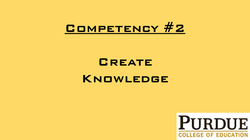
- Demonstrates ability to describe common research methods in Education Technology.
- Demonstrates ability to read and evaluate Educational Technology research.
- Applies research findings to the solution of common problems in Educational Technology.
Return to RB Purdue LDT Portfolio Homepage
Artifacts: EDCI 513 Mechanix Fall 2015
Narrative:
I was fortunate enough to have an ideal research project needing a paper produced already underway when entering my first Purdue LDT course. I had spent the summer working with the Texas A&M Computer Science Sketch Recognition Lab (TAMU SRL) regarding their Mechanix product. I deployed that product in my high school Engineering classroom and needed to write a paper documenting the results to submit to a conference. After overcoming some challenges regarding studies involving humans, I found myself presenting that paper at Brown University at CPTTE 2016.
Out of necessity, I quickly adapted to finding support data in other scholarly works while also incorporating common phrasing and argument organization techniques used in those types of productions. As Mechanix is an edge product in education with limited direct research support, I had to build background support by describing common research methodology in Education Technology through provision of related findings from other venues of educational technology deployment. I had 13 solid references to read and evaluate for Educational Technology research support in the paper ranging from supporting my work on Mechanix to making a strong case for the promising benefits of online interactive tutorials providing constructive feedback. The list of authors whose scholarly works I perused included:
- Both Bergmann/Sams and Bishop/Verleger regarding flipped classrooms,
- Christensen regarding the changing learners in the classroom,
- Hammond, multiple times, regarding the evolution of Mechanix,
- Tripp/Bichelmeyer regarding the instructional design strategy rapid prototyping, and
- VanLehn regarding tutoring systems analysis.
The first sentence describing the background clearly identifies the issue to be addressed. "A challenge for all courses at all levels requiring out-of-classroom practice is providing the learners with timely and effective feedback on that practice." This pinpoints a longstanding challenge with classroom instruction which is at odds with the fundamental theory of human learning stalwarts, that feedback must be timely and effective. I then delve into information about flipped classrooms which I encountered soon after moving to education in 2011, and progressed through several significant findings from the required readings in my first Purdue LDT course related to various course design options. The reference data was combined with my classroom findings to further the body of evidence confirming the benefits of the Mechanix tool.
This project provided an ideal opportunity for learning how to document and report on an academic study. The guidance and feedback from the instructor, readings, and peers helped drive the research and trial findings into a cohesive presentation regarding the performance of Mechanix in the high school classroom.
Though an early artifact in my Purdue LDT career, this opportunity drove significant knowledge creation in my ability to develop a solid research analysis and initiated my experience with building scholarly support into analyses. As a result, I have been afforded an opportunity to return to TAMU SRL this summer to perform a very similar activity with another tool, Sketchtivity/Coursesketch, that they have recently begun testing. TAMU SRL knows human-computer interaction, so adding my LDT-based instructional design knowledge allows me to apply my previous research findings to the tool analysis mix as part of finding and addressing Education Technology problems while pursuing enhancement of the product.
